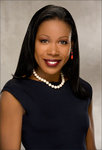

I had no idea.
I have been an avid student of American history both before my arrival in this country and while living here and I still had no idea.
I prided myself on the breadth of my knowledge and the variety of books and articles I had read. Certainly, I read about the Jim Crow laws and about lynching in the South as well as the depredations of the KKK and still I had no idea of the full effect of that culture on Black Americans. I allowed myself to believe that I was learning about isolated instances and that those threats couldn’t possibly lie over the whole land like a suffocating blanket.
I was completely wrong.
At first glance, “The Warmth of Other Suns” is an intimidating book of many pages and it could have been a deadly dull recitation of abuse and repression. Instead, I found myself wrapped up in the story of real people who had hope and vision and iron determination. It’s the story of the mass exodus of Blacks from the South starting at the end of World War I to the 1970s, and why they left.
By following the lives of three people from different areas in the South and of different backgrounds to their separate destinations in the North and West, Isabel Wilkerson paints a full picture of life for Black people in the country of their birth in the 20th century and beyond. The story of those three individuals and their families is interspersed with demographic studies that clearly show how migrants from the South were more likely to work, stay out of debt and educate their children than Blacks born in the urban North. She shows that they had more in common with Irish immigrants fleeing the famine and Europeans running from religious and ethnic persecution than other Americans simply moving from one part of the country to another.
Wilkerson’s prose is quite beautiful and at times lyrical. Her description of the Great Migration being akin to three majestic rivers flowing from the South along the train lines to cities in the North and West is a visual image that will stay with me.
Even in the relatively enlightened culture of the North and West, Ida Mae, George and Robert were boxed in and denied simple freedoms that white people have taken for granted all their lives. This is the story of how they persevered and to what extent they overcame those difficulties. This is the story of how they always felt it was all worth it.
I had no idea, but I do now — somewhat. I can now make more sense of what we are hearing from the Black Lives Matter movement due to a better understanding of how Blacks in the South were truly in fear for their lives every day. I have a better understanding of how it can be that young Black men are afraid they might be shot by a policeman just for driving their own car. At the same time, I understand the distress of those in law enforcement who are good people doing their best when they hear demands for defunding the police. This book reinforces the fact that a major shift in habits of word, thought and deed on all sides is necessary for this country to move forward together.
In the last two paragraphs of the book, Wilkerson quotes from the 1922 Chicago Commission on Race Relations report on the riots of 1919: “It is important for our white citizens to remember that the Negroes alone of all our immigrants came to America against their will by the special compelling invitation of the whites; that the institution of slavery was introduced, expanded and maintained by the United States by the white people and for their own benefit; and they likewise created the conditions that followed emancipation.
“Our Negro problem, therefore, is not of the Negro’s making. No group in our population is less responsible for its existence. But every group is responsible for its continuance ... Both races need to understand that their rights and duties are mutual and equal and that their interests in the common good are identical.”
UNDERWRITTEN BY THE FUND FOR NONPROFIT NEWS (NEWSMATCH) AT THE MIAMI FOUNDATION, THE ANGEL GUILD, ADVERTISERS, DONORS AND PEOPLE WHO SUPPORT INDEPENDENT, NONPROFIT LOCAL NEWS